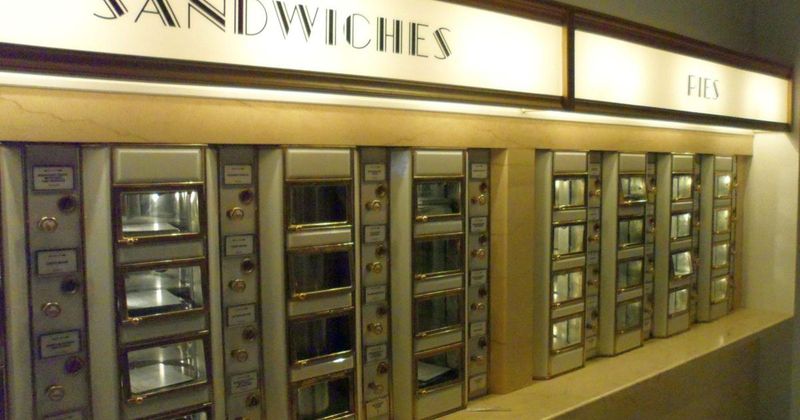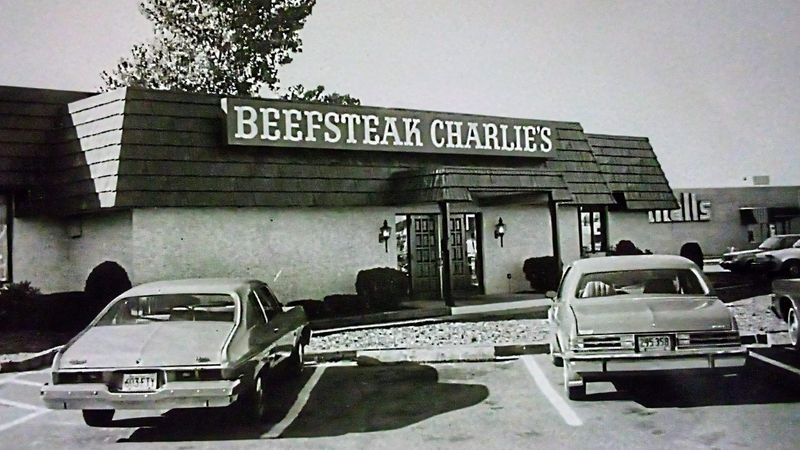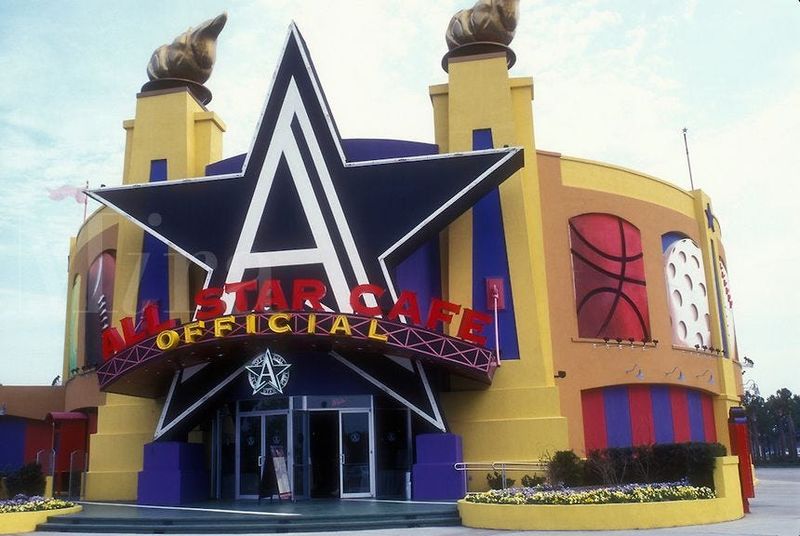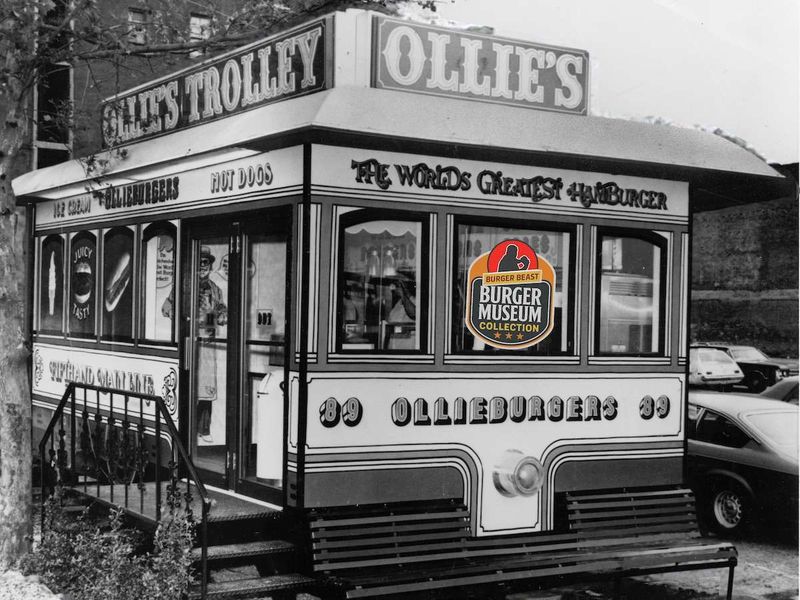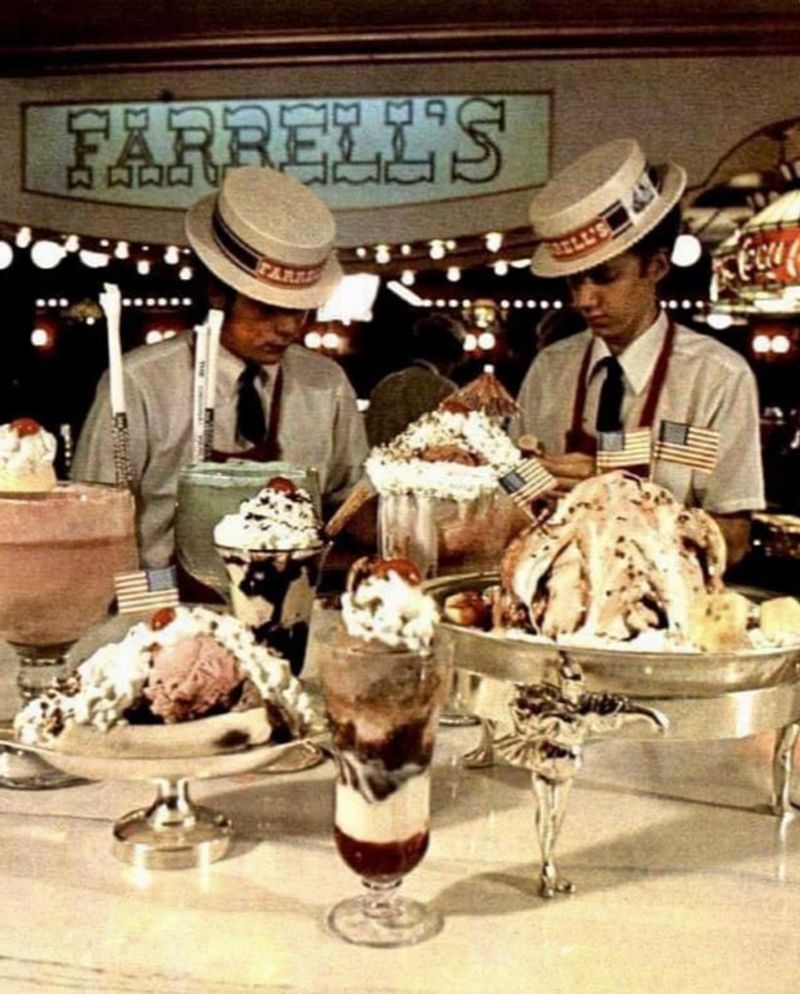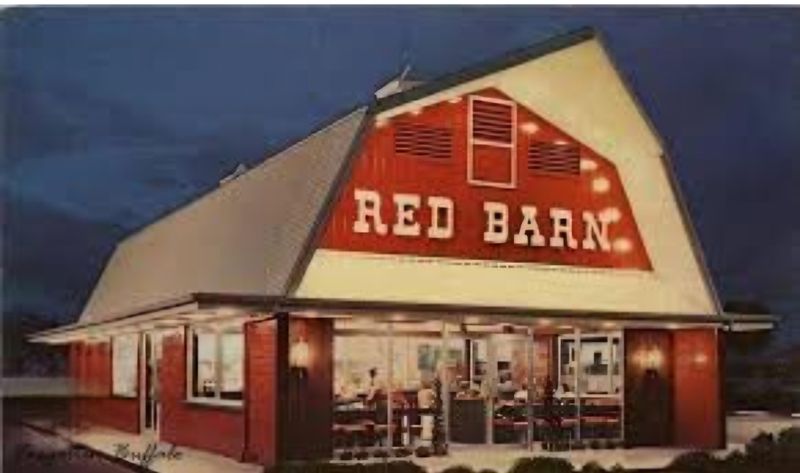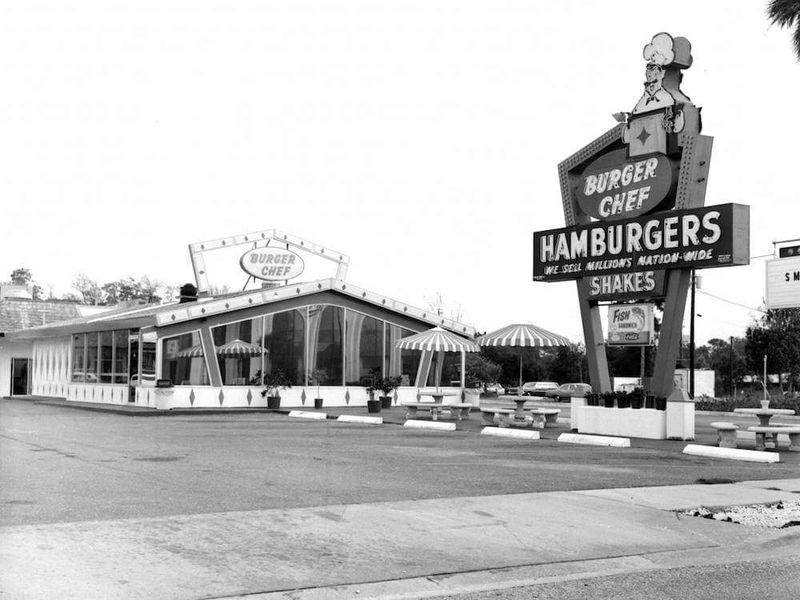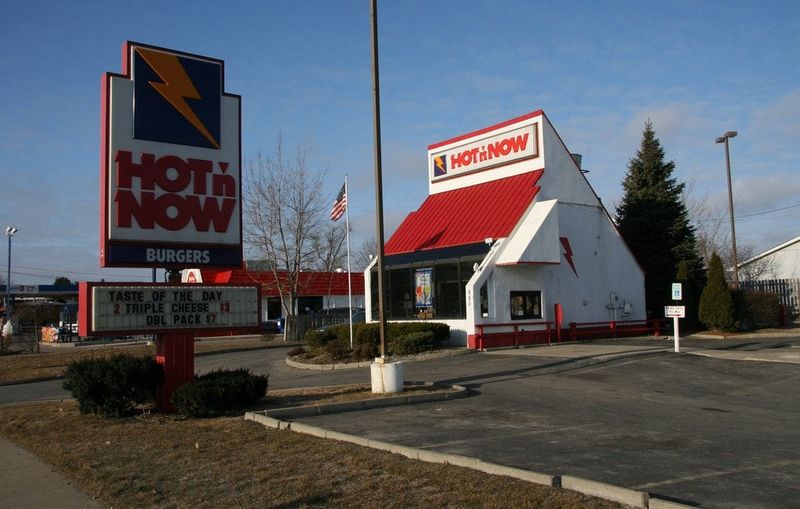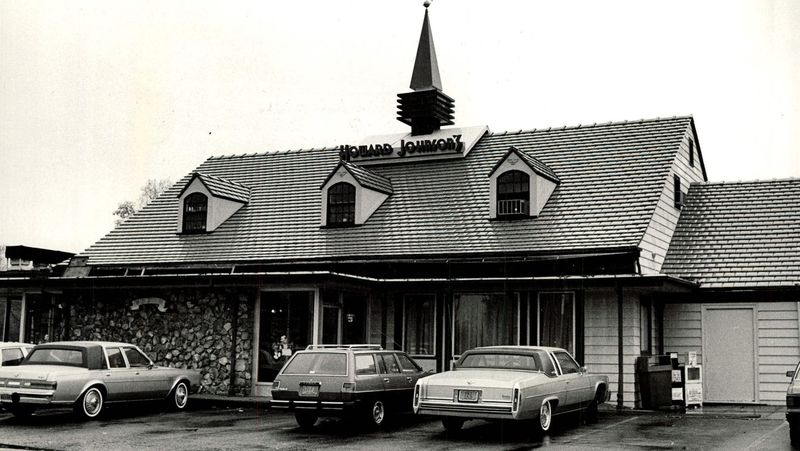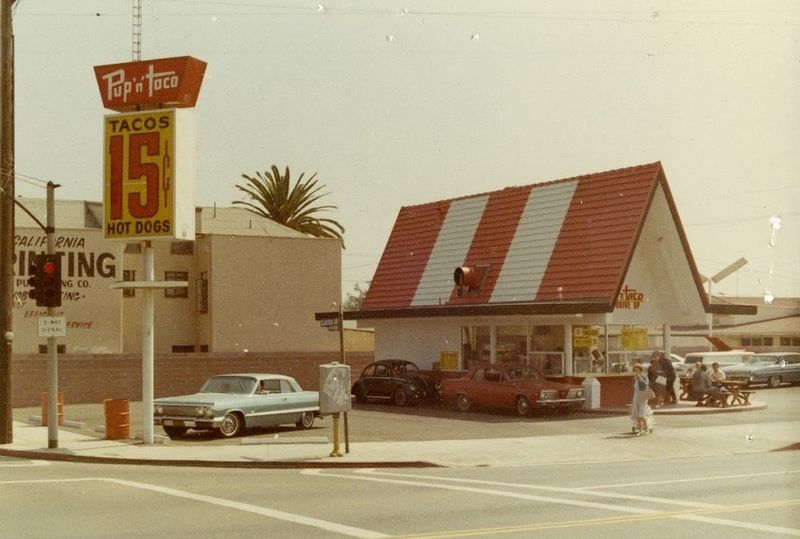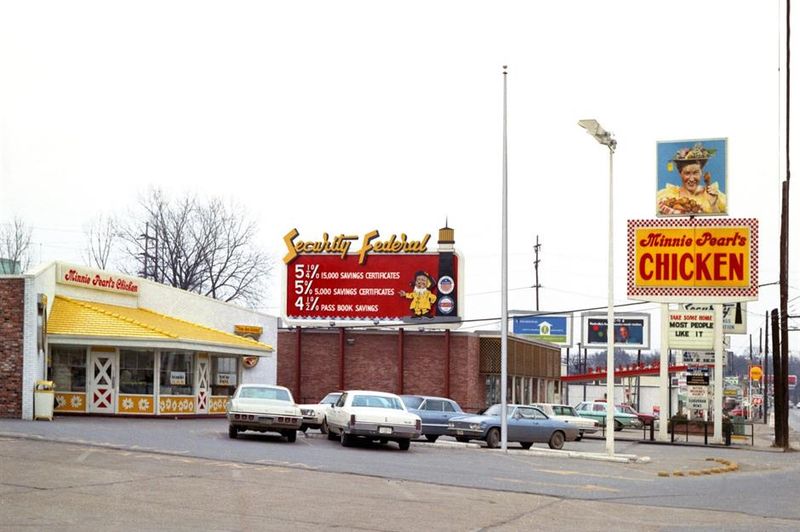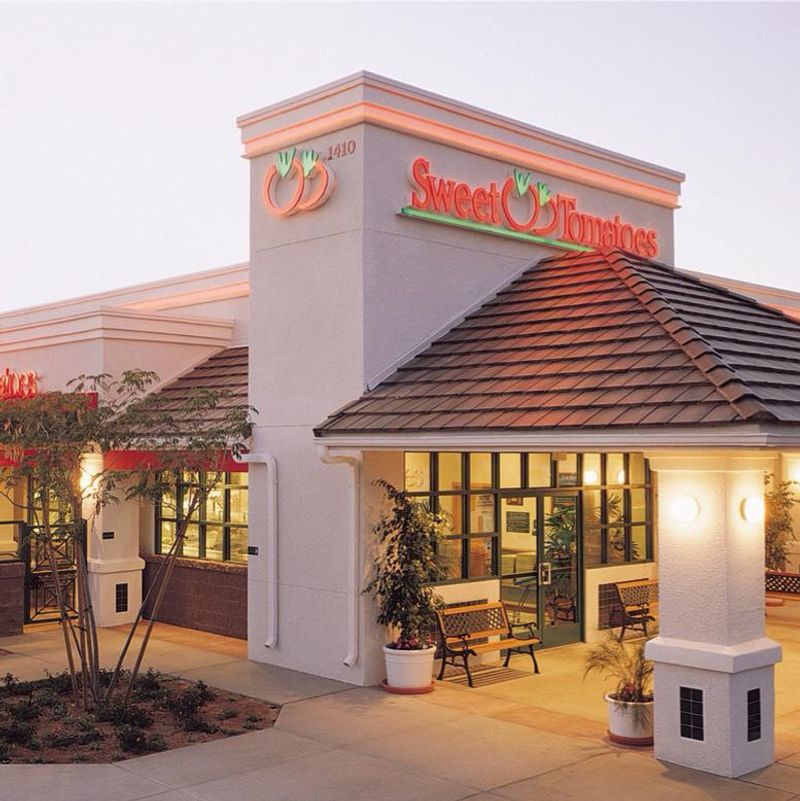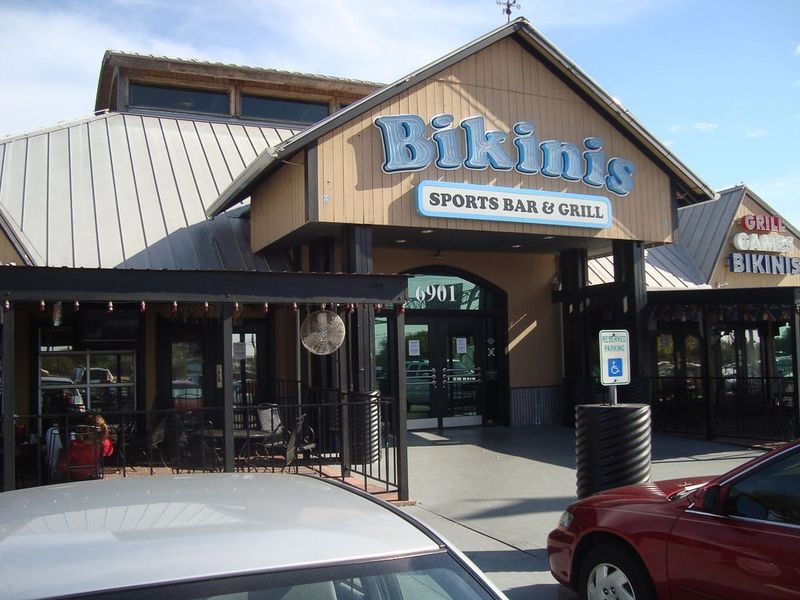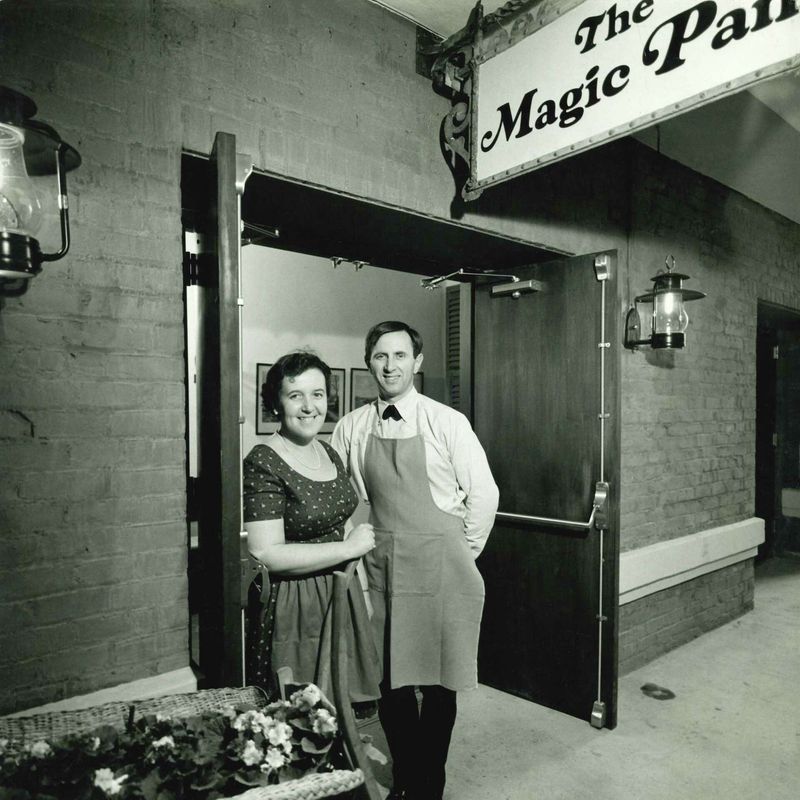American dining history is packed with wild ideas, bold experiments, and unforgettable gimmicks that once lined highways and filled shopping malls coast to coast. Some restaurants gave us coin-operated food windows, while others served unlimited shrimp with all the sangria you could handle. These 14 vanished chains didn’t just feed America, they created memories, sparked trends, and showed us that eating out could be an adventure worth talking about for decades.
1. Horn & Hardart Automat
Picture walking into a restaurant where no waiter greets you and no cashier rings you up. Instead, walls of little glass windows display sandwiches, pies, and hot meals—just drop in a nickel, turn the knob, and the door pops open. That was the magic of Horn & Hardart’s Automat, America’s first fast-food revolution.
At their peak, these coin-operated cafeterias dotted New York City and Philadelphia, serving office workers, families, and late-night crowds. Fresh food appeared behind each window as if by magic, restocked by hidden kitchen staff. The Automat became a cultural icon, appearing in movies and songs.
By 1991, the last Automat closed its doors, unable to compete with modern fast food and rising rents.
2. Beefsteak Charlie’s
Unlimited shrimp, endless refills of beer, wine, or sangria, and a slogan that promised indulgence: “You’re gonna get spoiled.” Beefsteak Charlie’s wasn’t subtle about what it offered, and customers loved every minute of it. The casual steakhouse became a favorite for birthdays, dates, and anyone craving an all-you-can-eat feast without breaking the bank.
Founded in New York, the chain grew rapidly through the 1980s, capitalizing on America’s appetite for value and volume. But rising food and alcohol costs made the unlimited model unsustainable. Competition from other casual dining chains squeezed margins even tighter.
By the mid-1990s, Beefsteak Charlie’s had faded from the scene, leaving behind fond memories of overflowing shrimp boats.
3. Official All-Star Café
When Planet Hollywood decided to tackle the sports world, they recruited legends: Wayne Gretzky, Shaquille O’Neal, Andre Agassi, and more. The result was the Official All-Star Café, a temple to athletic greatness where you could munch on “stadium cuisine” surrounded by autographed jerseys and giant screens replaying historic moments.
Each location felt like a sports museum crossed with a gift shop—you could buy memorabilia between bites of burgers and nachos. The celebrity backing generated buzz, but the novelty wore thin. Theme restaurants were falling out of favor, and the food couldn’t carry the concept alone.
The last Official All-Star Café, located at Disney’s Wide World of Sports, closed in 2007, ending the all-star lineup.
4. Lum’s
Beer-steamed hot dogs sound like something you’d invent at a backyard barbecue, but Lum’s turned the quirky cooking method into a signature dish that built an empire. Add the OllieBurger to the menu, and you had a hot-dog joint that stood out in the crowded fast-food landscape of the 1960s and ’70s.
Lum’s expanded aggressively, reaching hundreds of locations across the country. Franchisees loved the unique angle, and customers kept coming back for that distinctive beer-soaked flavor. But mismanagement, ownership changes, and internal conflicts slowly unraveled the chain.
Most locations disappeared by the 1980s, though a handful of independent Lum’s held on into the 2010s, keeping the beer-steamed tradition alive a little longer.
5. Farrell’s Ice Cream Parlour
Sirens blaring, drums pounding, waiters racing through the dining room carrying a massive sundae on a stretcher—Farrell’s Ice Cream Parlour didn’t just serve dessert; it staged a spectacle. The “Zoo” sundae could feed a small army, and the “Pig’s Trough” was exactly what it sounded like: ice cream served in an actual trough.
Farrell’s captured the nostalgic charm of old-fashioned soda fountains while cranking the energy up to eleven. Birthday parties became legendary events, complete with costumed staff and over-the-top presentations. But the novelty faded, and changing tastes led to declining sales.
After several revivals and ownership changes, the last Farrell’s location closed in 2019, silencing the sirens for good.
6. Red Barn
Shaped like an actual barn with a bright red roof, Red Barn restaurants were impossible to miss along highways in the 1960s and ’70s. Inside, you’d find the “Big Barney” burger and something unusual for fast food at the time: a self-serve salad bar where you could pile on toppings yourself.
Red Barn tried to offer a step up from typical burger joints, blending speed with a touch of customization. The barn architecture became iconic, and franchisees opened locations across the country. But competition from McDonald’s and Burger King proved too fierce, and expansion costs mounted.
By the late 1980s, Red Barn had mostly disappeared, though a few nostalgic barn-shaped buildings still stand, repurposed for other businesses.
7. Burger Chef
Before McDonald’s rolled out the Happy Meal, Burger Chef invented the Funmeal—a kid’s combo with a toy that turned dinner into playtime. They also pioneered the Works Bar, a toppings station where customers built their burgers exactly how they wanted, years before “customization” became a fast-food buzzword.
Burger Chef grew into the second-largest burger chain in America during its peak, trailing only McDonald’s. But corporate ownership changes and a tragic unsolved crime at an Indiana location in 1978 cast a shadow over the brand. Competition intensified, and Hardee’s eventually bought out the chain.
By the mid-1990s, the last Burger Chef locations had been converted or closed, erasing a true fast-food innovator.
8. Hot ‘n Now
No dining room, no frills, no problem—Hot ‘n Now stripped fast food down to its absolute essentials. These tiny drive-thru-only huts sold burgers, fries, and drinks for as little as 39 cents in the mid-1980s, making them the ultimate budget meal on wheels.
The business model was brilliant in its simplicity: minimal staffing, tiny real estate footprint, and rock-bottom prices that undercut every competitor. Hot ‘n Now spread quickly across the Midwest, attracting cost-conscious customers and curious burger lovers. But razor-thin profit margins left little room for error, and quality control became an issue.
The chain collapsed by the late 1990s, though a couple of Michigan locations have been revived by dedicated fans keeping the flame alive.
9. Howard Johnson’s Restaurants
Orange roofs dotted American highways like beacons for hungry travelers, promising fried clams, comfort food, and a rainbow of ice cream flavors—exactly 28 of them. Howard Johnson’s wasn’t just a restaurant; it was a road-trip tradition, a place where families knew they’d find clean restrooms, friendly service, and dependable meals.
At its peak, HoJo’s operated over 1,000 locations, defining the highway dining experience for generations. The brand-defining ice cream flavors ranged from classics like vanilla to oddities like burgundy cherry. But changing travel habits, interstate rest stops, and fast-food competition slowly eroded the empire.
The final Howard Johnson’s restaurant in the United States closed in 2022, ending nearly a century of orange-roofed nostalgia.
10. Pup ‘N’ Taco
Only in Southern California could someone look at tacos and hot dogs and think, “Why not both?” Pup ‘N’ Taco embraced the mashup, serving “pups” (hot dogs), tacos, and even pastrami under one quirky roof. The menu made no sense on paper, but it worked perfectly in the laid-back, anything-goes culture of 1960s and ’70s SoCal.
With 99 locations at its peak, Pup ‘N’ Taco became a beloved regional oddity, the kind of place locals swore by and tourists found baffling. But when Taco Bell came calling in 1984 with a buyout offer, the chain’s fate was sealed.
Taco Bell converted or closed every Pup ‘N’ Taco, erasing the quirky pup-and-taco combo from the fast-food landscape forever.
11. Minnie Pearl’s Fried Chicken
Celebrity endorsements can launch a brand into the stratosphere—or crash it spectacularly. Minnie Pearl’s Fried Chicken tried to ride the fame of the Grand Ole Opry star, positioning itself as a down-home KFC rival with Southern charm baked into every bucket.
Investors poured money into a breakneck expansion, opening locations faster than the company could manage them. But behind the cheerful country branding lurked serious problems: accounting irregularities, mismanagement, and financial chaos. The house of cards collapsed in less than two years, leaving franchisees furious and investors burned.
Minnie Pearl herself was largely uninvolved in the disaster, but her name became forever linked to one of the fastest implosions in restaurant history.
12. Souplantation / Sweet Tomatoes
Endless rows of fresh greens, bubbling soup pots, warm muffins, and soft-serve ice cream—all you could eat for one price. Souplantation (called Sweet Tomatoes in some regions) perfected the self-serve salad-and-soup buffet, turning healthy eating into an all-you-can-handle experience.
Health-conscious diners loved the variety and control, building custom salads piled high with toppings. Families appreciated the value and the fact that even picky eaters could find something. With 97 locations, the chain thrived for decades.
Then COVID-19 hit. Buffets became health hazards overnight, and new regulations made the self-serve model impossible. In 2020, Souplantation permanently closed every location, a pandemic casualty that left fans mourning their favorite soup-and-salad sanctuary.
13. Bikinis Sports Bar & Grill
Subtlety was not on the menu at Bikinis Sports Bar & Grill. The self-proclaimed “breastaurant” leaned hard into its concept, hiring bikini-clad servers and plastering the brand across everything from T-shirts to an actual Texas ghost town they renamed “Bikinis, Texas.” Yes, really.
The chain tried to carve out space in the crowded Hooters-dominated market, opening locations across Texas and beyond. Publicity stunts like the town renaming generated headlines, but they couldn’t sustain a business. Legal troubles, franchise disputes, and shifting cultural attitudes toward the “breastaurant” concept all took their toll.
By 2018, Bikinis had closed its doors, and even Bikinis, Texas, quietly reverted to its original name, Clark.
14. The Magic Pan
Watching crepes spin and sizzle on a rotating carousel mesmerized diners at The Magic Pan, where the cooking process became part of the entertainment. This creperie empire brought French elegance to American shopping malls, serving both savory and sweet crepes in an upscale-casual setting.
The patented crepe-making machine was the star attraction, visible from the dining room and endlessly fascinating to watch. Crepes weren’t common in America yet, so The Magic Pan introduced millions to the delicate, thin pancakes filled with everything from chicken to strawberries.
At its peak, the chain boasted locations nationwide. But tastes shifted, competition grew, and the novelty faded. By the 1990s, the original Magic Pan had disappeared, though the crepe craze it helped spark lives on.
